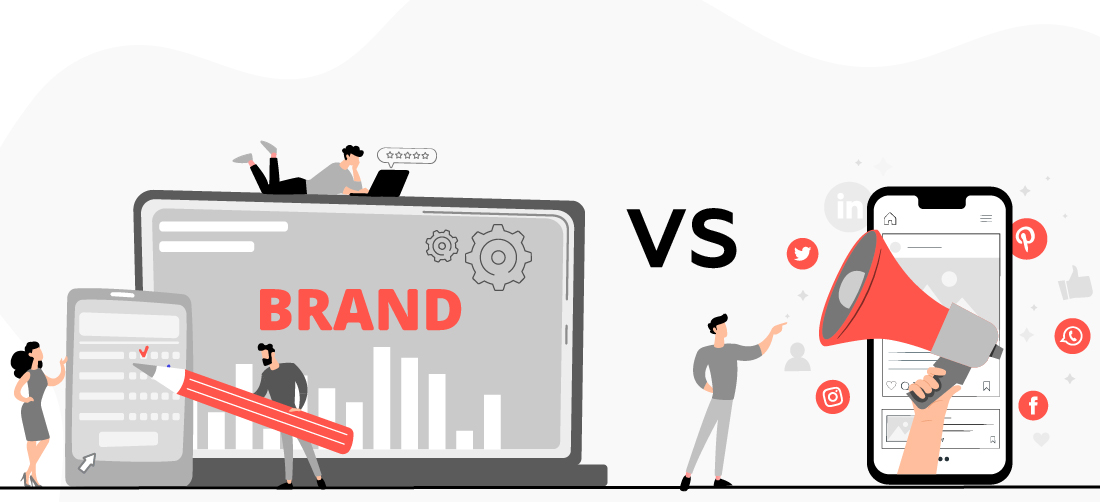Table Of Content
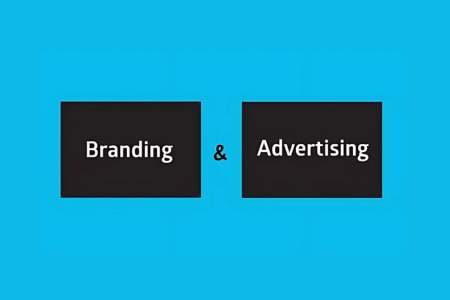
Branding and advertisement each play a vital role in a business, but the two work for different purposes. Branding is establishing an identity that differentiates one company's product or service. It provides the values a company portrays, its mission, and how it wants to be seen by its customers. Good branding is that which leads to trust, loyalty and recognition of the brand over time.
Advertising is a form of marketing, but it deals with specific campaigns to promote a product, service, or brand to a wider audience by possibly using paid media to capture customers' attention.
Branding is about who you are, whereas advertising is how you tell people about it. Branding is actually an exercise that focuses on building a consistent image over the long term, whereas advertising is just a short-term exercise, merely to create short-term awareness or promote sales. These both work together but come at different levels.
Let's go a bit deeper and take a closer look at the difference between branding and advertising.
|
Aspect |
Branding |
Advertising |
|
Definition |
The process of creating a unique identity, image, and perception for a product, service, or company. |
The act of promoting products or services through paid channels to increase awareness or sales. |
|
Purpose |
To build long-term recognition, trust, and loyalty around a brand. |
To drive immediate sales, leads, or actions by reaching target audiences. |
|
Focus |
Emotional connection, company values, and vision. |
Specific products, services, or promotional offers. |
|
Content Type |
Logos, slogans, mission statements, company culture, and brand stories. |
Ads, commercials, billboards, online banners, and promotional campaigns. |
|
Target Audience |
Long-term audience focus; appeals to emotions and values. |
Short-term focus; segmented by demographics, behaviors, and buying stages. |
|
Timeframe |
Continuous and ongoing process. |
Usually time-limited campaigns. |
|
Measurement |
Brand perception, customer loyalty, and emotional appeal. |
ROI, click-through rates, sales conversions, impressions, and reach. |
|
Tone |
Consistent, aligning with brand identity. |
Varies depending on the campaign’s goal and target audience. |
|
Investment |
Typically a larger, more long-term investment. |
Campaign-based, often with a fixed budget for a specific period. |
|
Example |
Nike’s 'Just Do It' slogan, Apple’s minimalist design language. |
A 30-second TV commercial for the latest Nike shoes. |
|
Relation |
Defines the company’s identity, values, and emotional positioning. |
Utilizes the brand identity to drive specific product/service sales or awareness. |
What is Branding?
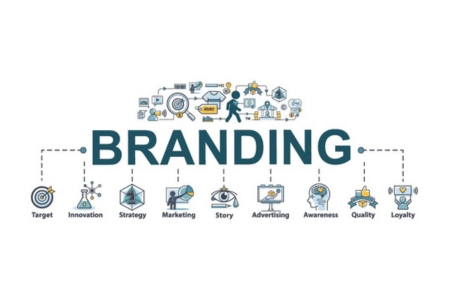
Branding is the process of shaping how people perceive a company, product or service. It goes well beyond a name or logo-it's about the whole experience customers associate with a brand.
Definition of Branding
Branding encompasses everything that identifies a business, including the voice and values of the brand. The logo is the visual identity, and the voice represents how the brand is associated in its communication with the audience. Values refer to what the brand stands for, generally creating emotional connections between customers.
Brand Goals
Long-lasting customer relationships and brand loyalty are the two key goals of branding. The more people trust a brand, the greater the possibility of obtaining repeat customers and other customers referring them to a particular brand, which reinforces the brand in due course.
Some Best Examples of Branding Practices
Some brands like Apple or Coca-Cola have been a good example of making and retaining memories about brand identity, by being consistent in all the touchpoints over the years. Success primarily lies in delivering a cohesive message and maintaining trust with the audience throughout.
What is Advertising?
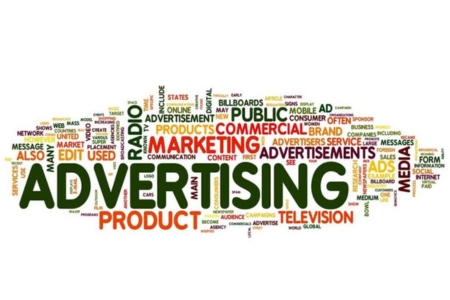
Advertising is a way for businesses to reach their customers or potential customers and sell them anything—an idea, product, or service. It raises awareness, draws attention, and encourages action. Companies use various media tools to communicate their message, such as television, radio, social networks, and newspapers.
Advertising consists of paid messages aimed at educating, influencing, or reminding someone to buy a product or idea. It appears in many forms:
Digital advertising: social media, web pages
Print advertising: magazines, newspapers
Broadcast advertising: TV, radio
Outdoor advertising: billboards, transit ads
Objectives of Advertising:
The key objectives include:
Driving urgent sales – Persuading customers to buy now by offering limited-time discounts or deals.
Short-term awareness – Making a brand or product stay top of mind, even if the audience is not immediately ready to buy.
Some campaigns stand out for their creativity and impact. For instance, Nike's "Just Do It" inspires motivation and self-belief, while Coca-Cola's "Share a Coke" connects emotionally with consumers by personalizing bottles with names. These memorable campaigns highlight how effective messaging can shape consumer behavior.
Key Differences Between Branding and Advertising
Timeframe (Short-term vs Long-term Focus)
Above all, branding is a long-term effort. It shapes a company’s identity, reputation, and values while building strong emotional connections with consumers. Branding gradually influences how people feel about a business. In other words, when you create an association that gives meaning or identity to a product, service, or company, you're laying the foundation for recognition and trust.
Advertising is short-term. It involves campaigns or promotions designed to generate immediate sales or awareness. While branding vs advertising differs in focus, both are essential. Branding nurtures loyalty and recognition, whereas advertising encourages immediate action, such as purchasing or subscribing today.
Strategies (Approaches Used in Branding vs Advertising)
Branding relies on storytelling, brand voice, and consistent messaging across channels. Logos, taglines, and experiences help consumers build emotional connections with the brand. When branding is powerful—like Nike’s “Just Do It” campaign—it goes beyond products, influencing lifestyles and philosophies.
In contrast, advertising uses paid media like TV ads, social media campaigns, and digital banners to achieve specific objectives quickly. The difference between branding and advertising lies in the scope—branding creates identity, while advertising focuses on selling products or services within that identity.
Measuring Success (Brand Building vs Advertising Success Metrics)
The success of branding is measured through qualitative metrics, such as brand awareness, customer loyalty, and brand equity. Surveys, sentiment analysis, and brand recall studies provide insights into how well people connect with the brand.
Meanwhile, advertising success is easier to measure quantitatively. Metrics like click-through rates (CTR), conversions, sales, and return on ad spend (ROAS) determine whether a campaign achieved its short-term objectives. While advertising drives quick results, branding ensures these results are sustainable over time.
Understanding the difference between branding and advertising helps businesses balance both effectively. In the debate of branding vs advertising, short-term campaigns deliver immediate growth, but strong branding fosters long-term relationships and trust.
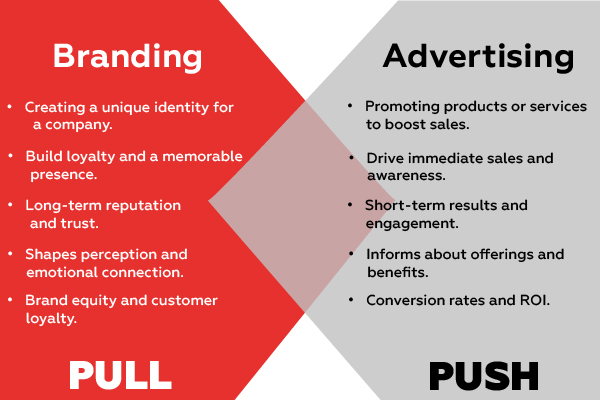
Why Both Branding and Advertising Matter?
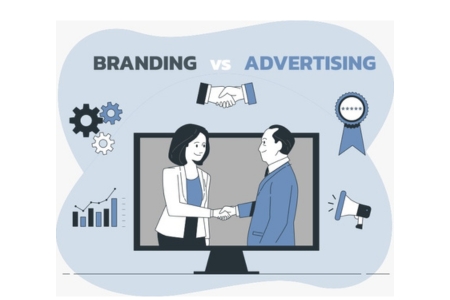
Branding and advertising are both essentials for any business, though they serve different purposes. Branding is about creating a unique identity for your business. It defines who you are, what you stand for, and what kind of image you want to build for your customers. Advertising, on the other hand, is how one advertises their products or services. The bottom line of advertising is spreading the message to the world. The distinction between branding vs. advertising is critical to understand in crafting a strong business strategy.
Branding and Advertising Relationship
Branding works well because it supports your advertising. Once your message is consistent across all your promotions, you can work with brand support to strengthen that advertisement. Once your name is known and accepted, your advertising efforts gain more power. Branding vs. advertising can be seen as a long-term vs. short-term relationship, with branding being built and fostered over time, while advertising grabs immediate attention. In a nutshell, branding lays the foundation, and advertising spreads the word across to your prospects.
When to Focus on Branding over Advertising—or Vice Versa
There are moments when one should take priority over the other. Are you opening a new business? Branding should be your priority to get your identity set in place. Are you introducing a new product or increasing sales? Game on—put advertising in the spotlight. The constant balancing act between branding vs. advertising helps in knowing where to focus depending on your business's specific needs.
Difference Between Branding and Advertising
Understanding the difference between branding vs. advertising is essential in building an effective marketing strategy. Branding focuses on creating a lasting image, while advertising works on promoting that image to generate immediate results. Both, however, are crucial and complement each other in business growth.
Conclusion
Understanding the difference between branding and advertising is crucial for long-term business success. Branding builds a lasting identity, while advertising drives immediate attention and sales. Businesses should develop strong strategies for both to achieve growth, recognition, and sustainable success.
Excellent Publicity is the perfect advertising agency, offering comprehensive digital advertising services and more. We expertly craft campaigns that boost visibility, engage audiences, and deliver measurable results, making them the ideal partner for business growth.
FAQs
Absolutely, but it would be very hard to prosper in the absence of good old advertising. Success is all about strong word-of-mouth, excellent quality products, and loyalty from customers. Organic growth is possible with fewer, if any, ads at all.
Branding actually helps promote advertising by ensuring that there is a consensus in messages. A strong brand makes ads more believable; thus, they tend to bring about adherence on an emotional level by the audience, which results in effectiveness.
Some mix-up branding and advertising. Branding is more of a long-term activity that contributes to the building of identity, while advertising is more focused on the product or campaign. Secondly, people believe that only big businesses require branding.
Consistency in all brand messaging, colors, and logos is essential in small businesses. Low-cost tools such as social media and email marketing should be exploited to achieve a brand's message. Customer engagement and authenticity in every campaign are prime ways of creating trust and awareness.
Social media also allows brands to direct dialogue with their potential audience. Some of its benefits include advertising, real-time feedback, and increased virality. User-generated content also contributes to the increased visibility and reputation of the brand.


